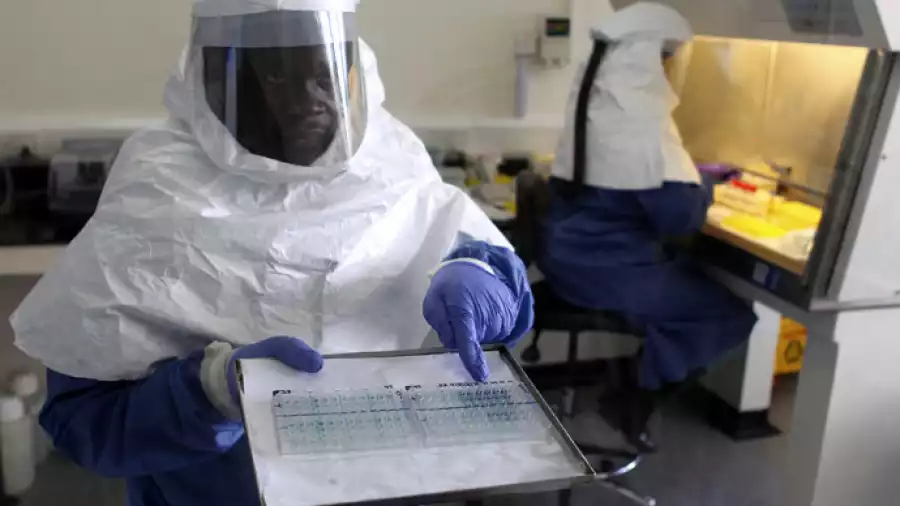The Ebola outbreak in Guinea and its spread to other areas of West Africa, including Nigeria has caused global alarm. According to the Centre for Disease Control, since the detection of Ebola in March, the number of suspected and confirmed cases attributed to Ebola in the West African countries, such as Liberia, Sierra Leone, Guinea and Nigeria stands at 1,711.
Meanwhile, a Saudi man tested for the disease has died in Jeddah after returning from Sierra Leone on Sunday. If there were a linkage of the Saudi man’s death to the Ebola virus, it would be the first fatality outside the West African countries.
As one of the world’s most infectious and deadly diseases, with no cure, the level of fear, surrounding Ebola is to an extent expected. However, much of the fear is rooted in misunderstandings. Dispelling this is perhaps the biggest challenge in tackling Ebola and is critical to furthering our knowledge about the disease and efforts to control it.
Here is the myth versus the truth about some of the most common misconceptions about Ebola virus:
Myth: Ebola virus is airborne, waterborne or spreads through casual contact.
Truth: Ebola virus spreads when the bodily fluids of an infected person meet the mucous membranes of a non-infected person. That means Ebola virus in fluids, such as saliva, blood, sweat or urine has to be exposed to your eyes, mouth, nostrils, ears, genital area or an open wound in order to infect you.
In other words, it takes a lot of contact, not just casual contact, to become infected with the virus. This is the reason why many of the victims of the disease in West Africa are health care workers or family members caring for a sick relative. For example, the Minister of Health, Prof. Onyebuchi Chukwu, during a news conference in Abuja, revealed that a nurse, who was one of the medical personnel that attended to the late Liberian-American, Patrick Sawyer, died of the disease. He also confirmed that five other medical practitioners, who participated in the treatment of Sawyer, were infected with the virus.
Myth: This is the first major outbreak of Ebola.
Truth: This is the largest outbreak of Ebola in history, but it is not the first. The virus was first diagnosed in humans in 1976 in the Democratic Republic of Congo, where it infected 318 people and had an 88 per cent fatality rate. Since then, various strains of the disease have popped up around the African continent, infecting as many as 425 people in 2000, and most recently, 57 people in 2012, according to World Health Organisation, as of August 4, 2014, the most recent count available, Ebola virus in Liberia, Guinea, Sierra Leone and Nigeria since the virus emerged again this year.
Myth: Ebola can be treated with antibiotics, chewing large quantity of bitter kola, onions, or drinking condensed milk.
Truth: Antibiotics cure bacterial infections, not viral infections. At present, there is neither a cure nor a vaccine for the Ebola virus. Instead, there is an experimental serum called ZMapp, which contains antibodies designed to help block the virus. Before the 2014 Ebola outbreak, it was only tested on monkeys and has not been approved for human use.
Myth: Ebola liquefies your organs, which causes bleeding from the orifices.
Truth:Ebola symptoms can include bleeding from the eyes, ears, nose and mouth. However, the body’s organs are not liquefied. Once the Ebola virus makes its way into the body, it gets in the body’s cells and replicates itself. Then it produces a protein that is called ebolavirus glycoprotein, and attaches to the cells on the inside of the blood vessels. This increases permeability of the blood vessels, leading to blood “leaking out” of the vessels. Even people who do not show hemorrhagic symptoms will experience this leaking of blood from the vessels. The continuous loss of blood will eventually lead to shock and ultimately death.
To reduce the risk of human-to-human transmission in the community, close contact with infected patients, particularly with their bodily fluids need to be avoided. Also, do not touch
Related forums










![September Babies (2024) [German]](https://www.memesng.com/r/storage.waploaded.com/images/d0e6b38880f79bdb0ce94373f212ef7b.jpg?w=50&ulb=true&ssl=1)
![Kaam Chalu Hai (2024) [Hindi]](https://www.memesng.com/r/storage.waploaded.com/images/39ae6c803d83a68e99498036525922a8.jpg?w=50&ulb=true&ssl=1)
![Article 370 (2024) [Hindi]](https://www.memesng.com/r/storage.waploaded.com/images/8853128cca4151e9f37a5c92d5547ec2.jpg?w=50&ulb=true&ssl=1)














{{comment.anon_name ?? comment.full_name}}
{{timeAgo(comment.date_added)}}
{{comment.body}}
{{subComment.anon_name ?? subComment.full_name}}
{{timeAgo(subComment.date_added)}}
{{subComment.body}}